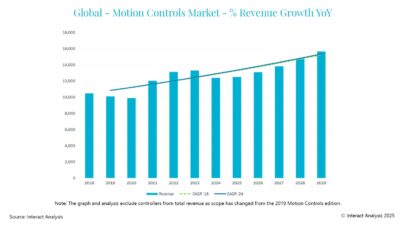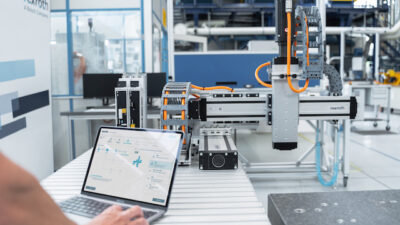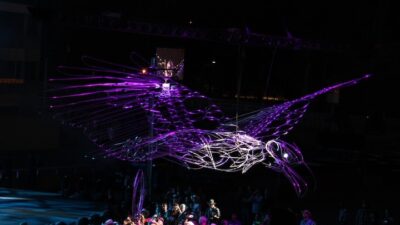Unique controls and advanced materials—these contributed to setting seven world records in less than a year. Unwilling to tout technologies, the plant manager instead praises his team's abilities to understand current operating conditions, variables and constraints, then execute better than competitors.
Unique controls and advanced materials—these contributed to setting seven world records in less than a year. Unwilling to tout technologies, the plant manager instead praises his team’s abilities to understand current operating conditions, variables and constraints, then execute better than competitors. And strong wind helps, too.
The ‘plant,’ I’m referring to is a world-class sailing vessel, Geronimo , the largest trimaran upon its 2002 launch, at 34 m (111.5 ft) length. It’s arguably still the most advanced, with carbon fiber for its three hulls, sails, and the largest canted mast (8° left or right of center) providing an estimated performance advantage of 7-10%. Parallels to a great automation implementation are many. Like many leaders, plant manager… well, skipper… Olivier de Kersauson, chose not to estimate how far ahead advanced technology has put him in front of competitors. ‘We make the best of all techniques—in that we are most advanced,’ says de Kersauson, days after shattering the Yokohama-to-San Francisco sailing record by nearly 19 hours.
As in manufacturing, strategy consumes his time and effort. Often it’s faster to go a longer distance with stronger wind, than point to point in calmer waters. Choosing the best route includes analysis of weather and models against data gathered. Risks include design and conditions. While lighter generally is better, Geronimo’s original carbon-fiber mast design didn’t meet performance expectations and was replaced. The unknown also wreaks havoc: ocean debris waylaid the ship for several months for repairs.
Respect evident, de Kersauson says his people are first, then the ship… without them, there is no race. Onboard sensor arrays include crewmembers. Music, even off duty, isn’t allowed. ‘You must listen to the wind and the [sounds of the] boat; they help tell you what you need to know’ for performance and safety, advises de Kersauson. Real-time communication and actuation means that before a hand or word command is finished, crewmembers are in motion, anticipating, and acting without hesitation.
Even with Geronimo’s Schneider Electric and Capgemini sponsorships, funding remains a challenge; most of the crew, captain included, have other means of support. Despite challenges and successes with ‘the boat of his dreams,’ there’s thirst for more, and an upgrade is never far from de Kersauson’s thoughts, even now at age 63. ‘I’d start building a better ship next month, if I had the money,’ he says. Racing on Geronimo resumes in September. For photos, stats, and links to related sites, read this online under August 2006 at www.controleng.com/archive .
According to crew manager, Louis Noel Vivies, Geronimo broke seven records from July 2005 to June 2006 in the maxi class (over 100 ft). These are:
-
June 2006 Yokohama/San Francisco 4,482 Miles 13d 22h 38m 28s (beating former recordholder Bruno Peyron by 18h 44m).
-
May 2006 Yokohama/Hong Kong 1,650 Miles 4d 17h 47m 23s
-
April 2006 San Francisco/Yokohama 4,482 Miles 14d 22h 40m 41s and April 2006 Honolulu / Yokohama 9d 23h 57m 06s (not ratified because it was part of the larger journey, but certified, beating the prior Steve Fossett record by 3d 20h 12m.)
-
November 2005 Transpacific (Los Angeles/Honolulu) 2,215 Miles 4d 19h 31m 37s
-
August 2005 Sydney/Tahiti (Papeete) 3,298 Miles 13d 8h 25m 56s
-
July 2005 Round Australia 6,500 Miles 17d 12h 57m 5s
Click one the links for Geronimo racing stats, and other information.
https://www.trimaran-geronimo.com
https://www.superyachting.com
https://www.sailing.org
During Geronimo’s stay in San Francisco area, the Corinthian Yacht Club served as host.
https://www.cyc.org
| Crew members hand crank hydraulics that move the mast as needed to optimize wind capture. |
| Geronimo’s mast clears the bottom of the Golden Gate bridge (background) by more than 30 ft, but it looks much less from on deck. Record-setting skipper Olivier de Kersauson, at the helm, and crew are all business under sail. |
| Computers help a lot, says de Kersauson. Sensors and instrumentation record plant, environment, and operating conditions at regular intervals. Information is analyzed in real time and studied later to better match performance with present and anticipated winds. |
| Top recorded speed on the level is 41 knots; at bottom of a swell, 42 knots (that’s about 48 mph!). |
| Geronimo was the first trimaran over 100 ft in length, and is still just one of three of that size. It’s the only with a canted mast design to bear load of 80 tons at the base. |
| Telemecanique Twido nano controller claims to be the first nano PLC with embedded Ethernet capability that can be programmed with either Bluetooth wireless or Ethernet. |



